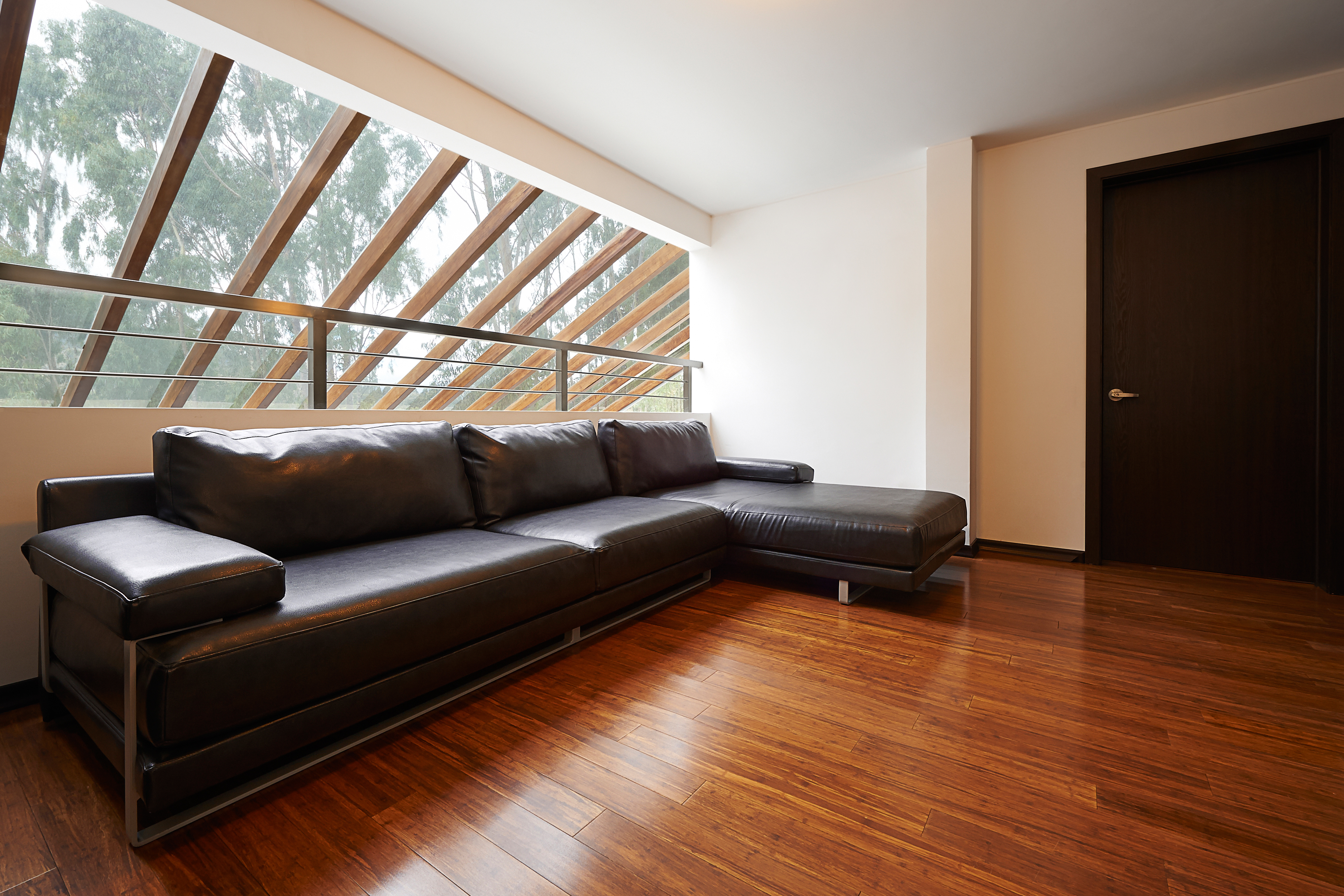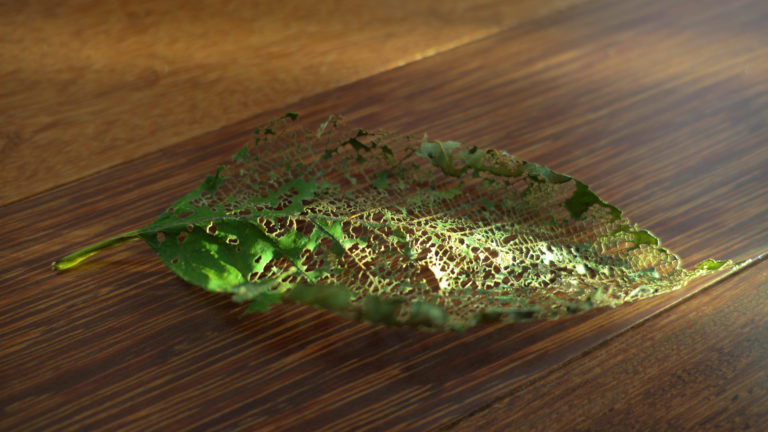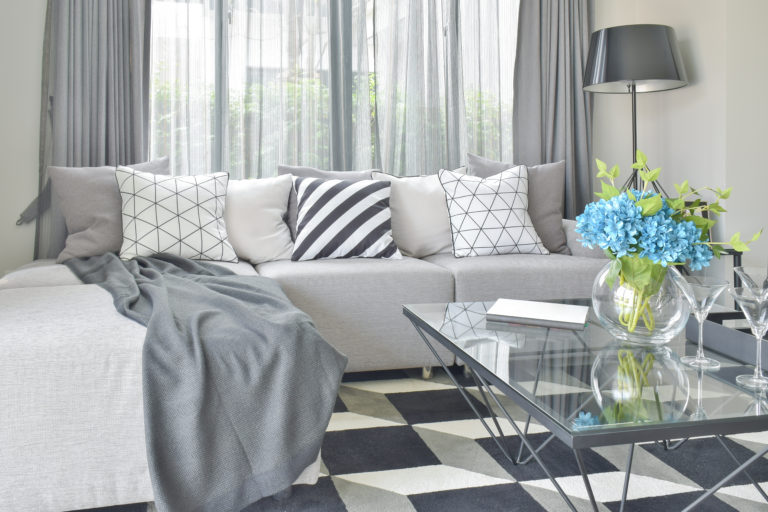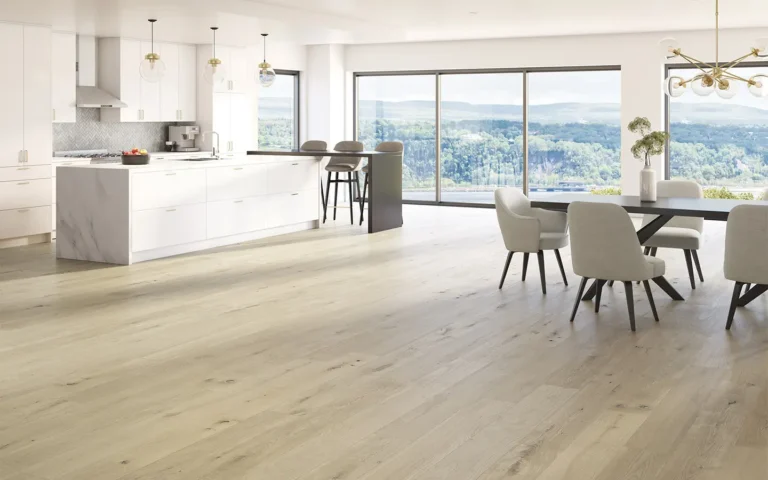This post may contain references or links to products from one or more partners of our parent company and/or subsidiaries of our parent company. For more information, visit this page.
Updated February 22, 2022
Wondering if you can refinish bamboo flooring? Don’t worry—it’s a question we hear all the time.
Maybe you’re looking into bamboo floors as a non-toxic laminate flooring alternative and want to know how long you can expect them to last.
Or maybe you already have bamboo floors you love, but they need a little TLC.
Either way, yes—you can absolutely refinish bamboo flooring! But—it entirely depends on the type of bamboo flooring that you have (or want to buy).
If you are looking for the best bamboo flooring brands, we highly recommend looking at the Heritage Collection and the Ethereal Collection from Proximity Mills. These collections are made with a premium plywood core which makes the product as stable as any premium hardwood.
Whatever the case, you’ve come to the right place. Below, we’ve put together a full guide to all the information you need to know about refinishing bamboo floors.
We’ll go over the different types of bamboo flooring, explain which of these bamboo floors can be refinished (and how), and even give you step-by-step instructions to refinishing these amazing floors. Let’s get started!
Bamboo Flooring Basics
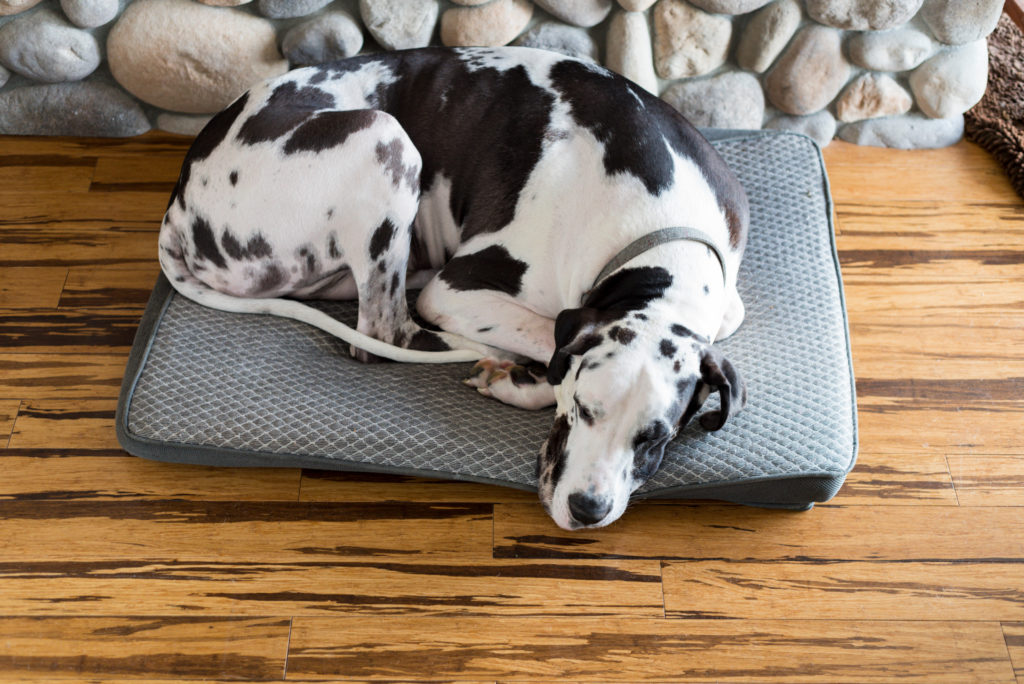
Bamboo is sometimes thought of as a type of fake wood flooring. We understand that, since bamboo isn’t actually made from wood (it’s technically a grass).
That being said, bamboo flooring is made—and behaves—just like other types of wood flooring. So we prefer to think of it as a hardwood floor alternative.
In General, Can You Refinish Bamboo Flooring?
However you choose to think about it, bamboo flooring is similar to wood flooring in function and look. You can even use it to create timeless wood floor patterns like herringbone parquet!
So yes—you can absolutely refinish bamboo flooring the same way you’d refinish hardwood flooring.
That being said, there are several different types of bamboo flooring. And each of them has different refinishing considerations.
The 3 Main Types of Bamboo Flooring
Bamboo flooring is all made from bamboo stalks, but the way it’s constructed can change the look dramatically.
None of these types are any better or worse than the others, and many of the best hardwood floor brands sell all three. Some, like Proximity Mills, even make ultra-high-density bamboo floors that give you even more bang for your buck (talk about some of the best flooring for dogs).
Basically, if you want to refinish bamboo flooring, any of these three options will work just fine.
1. Horizontal Bamboo Flooring
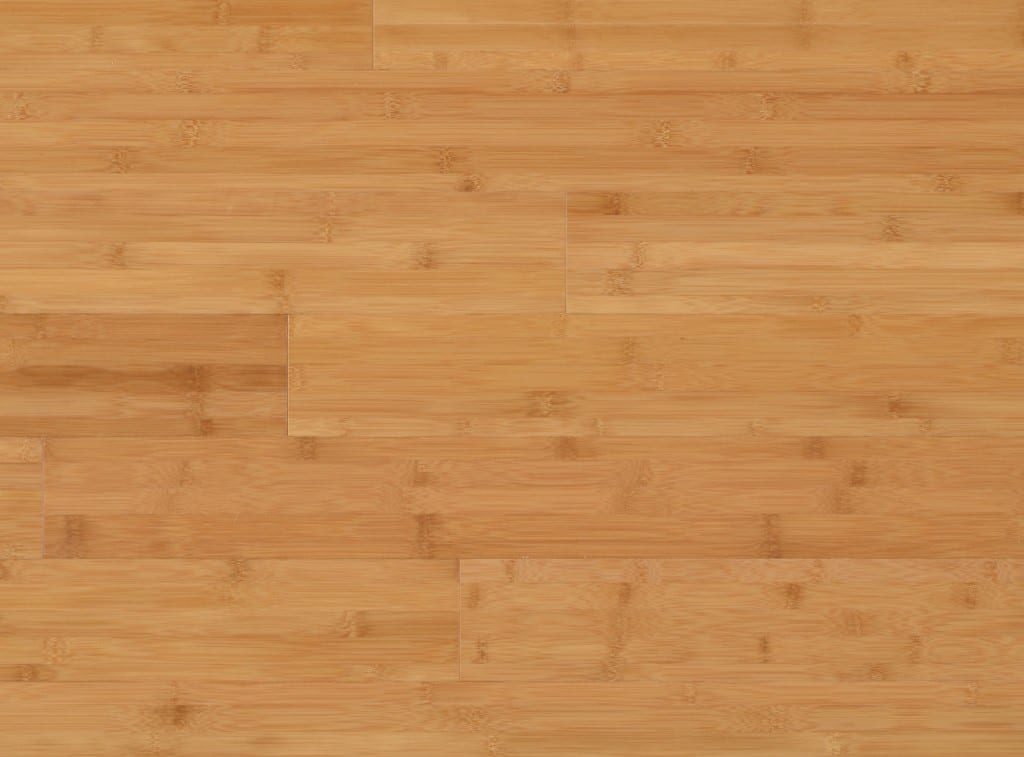
Horizontal bamboo flooring is perhaps the most popular of the three options. It’s made of bamboo stalks that are glued together horizontally to form a plank. When you think of bamboo flooring, you’re probably picturing this type.
2. Vertical Bamboo Flooring
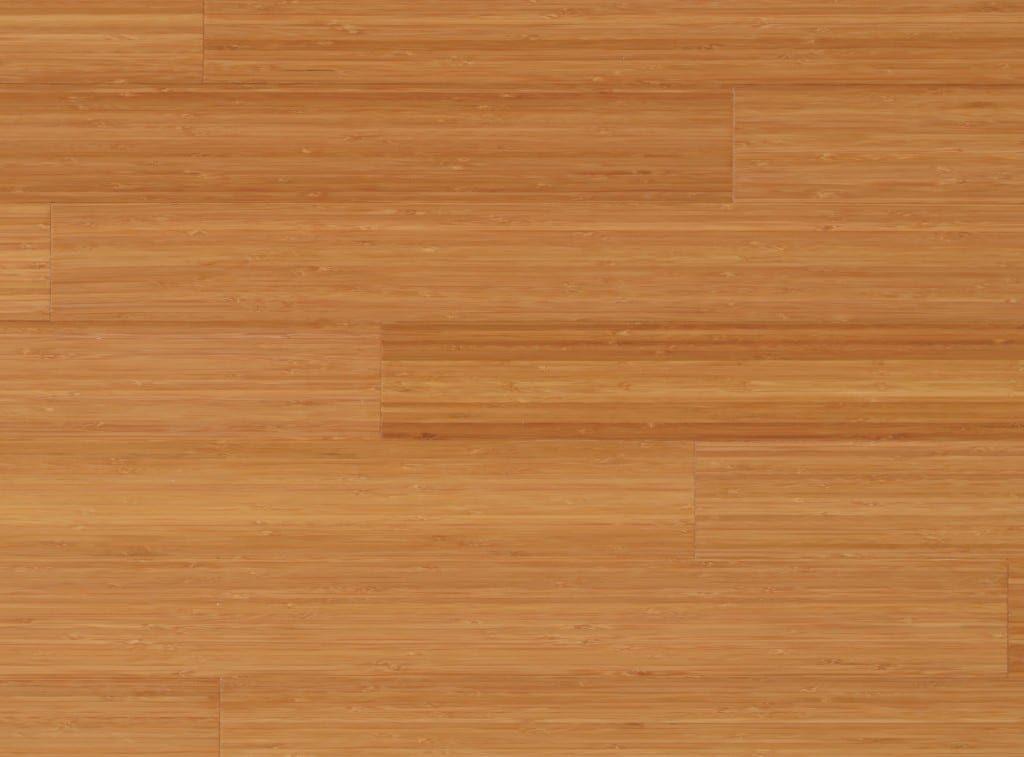
Vertical bamboo flooring is also made of thin strips of bamboo, but the strips are glued together (you guessed it) vertically. You’ll see more lines in this type because of the way it’s glued together. It also has a more modern, streamlined look.
3. Strand-Woven Bamboo Flooring
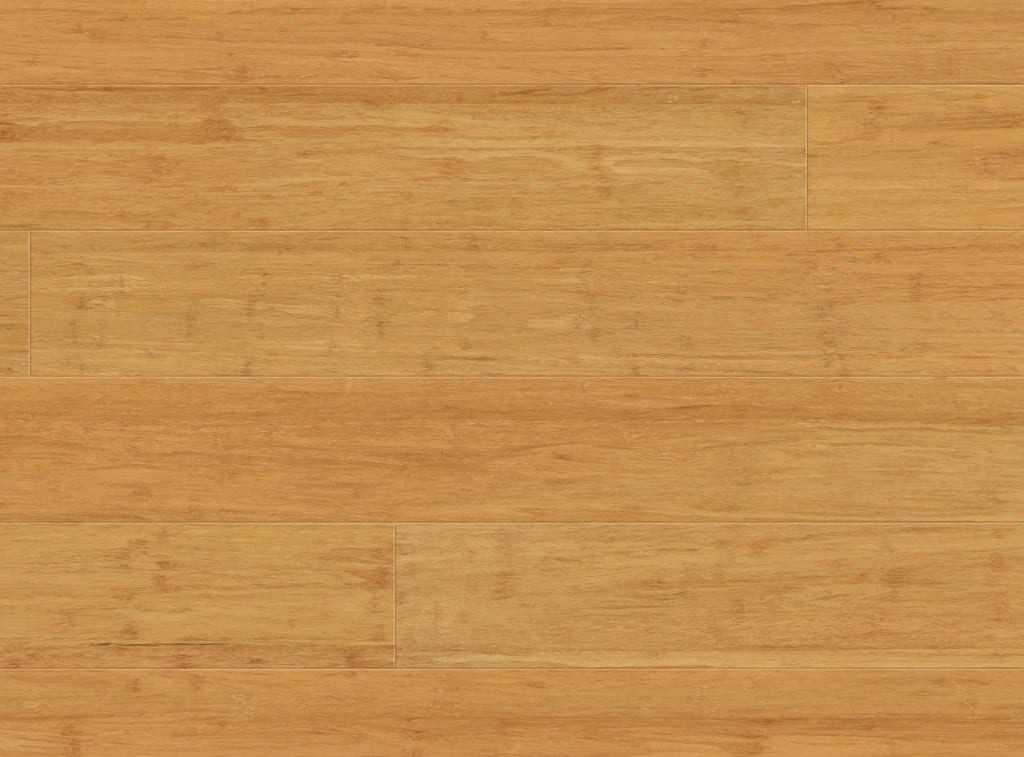
Strand-woven bamboo isn’t made from bamboo strips. Rather, it’s made from stalks that have been shredded into fibers, and then bonded with adhesives. Using pressure and heat, this mixture is then pressed into blocks.
This process makes strand-woven bamboo durable. Like, incredibly durable. As in, even more durable than the most durable wood flooring. In fact, strand-woven bamboo scores almost twice as high as ash flooring on the Janka hardness scale!
Translation: you won’t need to refinish strand-woven bamboo flooring as much because it’s so dent and scratch-resistant, but it may be a little harder to sand down when you do. Not by much though.
Best Brands of 2024
Solid vs. Engineered Bamboo Flooring
Like hardwood, bamboo comes in both solid and engineered options. Solid planks are made completely of bamboo, while engineered planks feature a bamboo veneer attached to a plywood or fiberboard core.
While we’d recommend looking into some engineered bamboo flooring pros and cons, the best engineered bamboo flooring has the same advantages and disadvantages as the best engineered wood flooring. So you can think about them the same way.
Can You Refinish Engineered Bamboo Flooring?
The short answer: sometimes.
As with wood, engineered bamboo can be some of the easiest flooring to install (if you buy it as click-together flooring). But, as with wood, you can only refinish engineered bamboo if the veneer is thick enough to do so.
How thick exactly? As a general rule of thumb, you can refinish bamboo flooring with a veneer thicker than 2mm—but you may only be able to refinish it once.
And if you don’t have a veneer layer that thick, you may not be able to refinish it at all. We know—it’s one of the most annoying engineered wood disadvantages there is.
Either way, we’d recommend talking to a specialist at a flooring store near you if this is a concern. They can tell you all the details of their specific engineered products, including how many times they can be refinished.
But Don’t Worry: Your Probably Won’t Have To
We should also add that refinishing is much less of a concern (as in, barely a concern at all) if you buy your wood or bamboo prefinished. Why?
The best engineered hardwood floor brands boast UV-cured finishes that usually contain aluminum oxide, which is an extremely durable substance—meaning scratches have a really, really, really hard time penetrating it. The most you’ll have to do with these floors is a simple resurfacing, which doesn’t involve any sanding.
Carbonized vs. Non-Carbonized (Natural) Bamboo Flooring
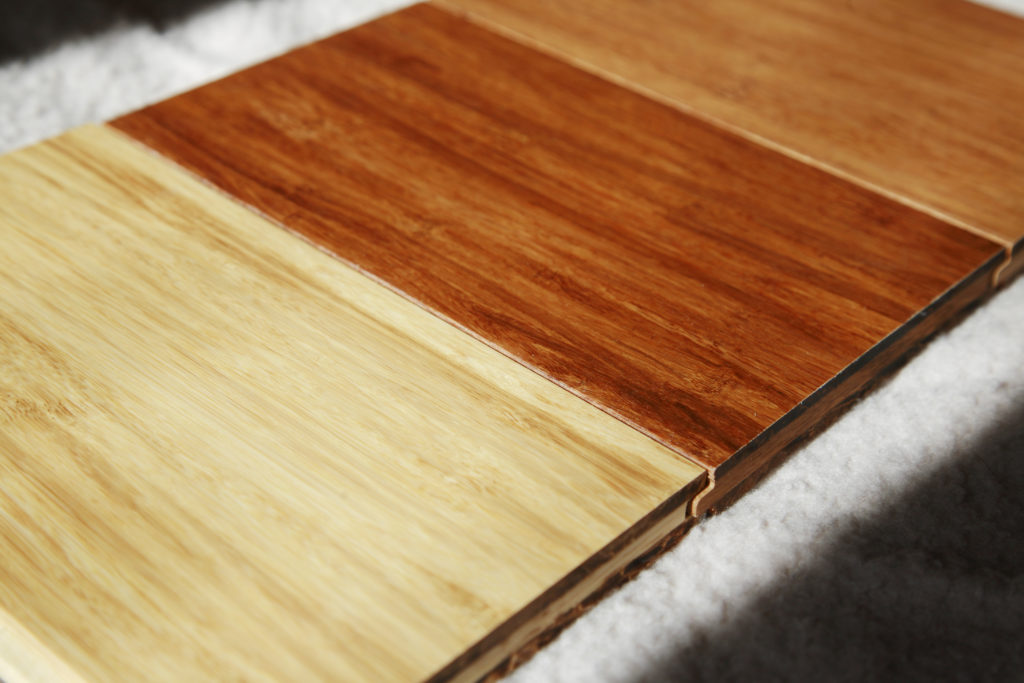
Another thing to consider when you refinish bamboo flooring is the difference between carbonized and non-carbonized (natural) products.
Non-carbonized (natural) bamboo is a lighter color, which hides dents and scratches well. Carbonized bamboo flooring, on the other hand, has been processed—giving it a darker amber hue.
The downside to carbonized bamboo: it’s a bit more vulnerable to dents. So if scratch-resistant flooring is important to you, you’d be better off with a non-carbonized product.
Think of the non-carbonized vs. carbonized debate like the hickory vs. oak debate. Both products are great for similar applications, but they’re a tiny bit different in appearance, hardness, and price.
Can You Refinish Bamboo Flooring That Has Been Carbonized?
Again, absolutely. Remember: carbonized bamboo is a bit more scratch-prone than natural (non-carbonized bamboo). That means it’s softer and easier to refinish.
We get it though. Some people want a hardwood floor alternative that’s both dark and super hard. For that, we’d recommend looking into the vinyl plank vs. laminate flooring debate. One (or both) of these choices might be what you’re looking for.
Will Refinishing Carbonized Bamboo Lighten its Color?
No. The good news is that carbonized bamboo is the same color throughout the plank. So even when you sand it and refinish it, it will keep the same beautiful color!
Do Bamboo Floors Scratch Easily?
Scratches can happen with bamboo, but they’re more common with carbonized products (especially in horizontal or vertical planks).
But overall, rest easy. All of these products are very durable, and most people never have to refinish bamboo flooring that they’ve purchased.
Just remember: if you choose to buy click-together floating floors, you may find yourself having to refinish your bamboo flooring more often. One of the big disadvantages of floating floors is that they can wear out a bit more quickly than other types of floors.
How Can You Get Scratches out of Bamboo Flooring?
Once you have scratches, the only way to get them out is to sand down and refinish your floor! We will get into the step-by-step on that below.
Can You Use Stain When You Refinish Bamboo Flooring?
Sure! Staining bamboo flooring is similar to staining other hardwoods.
You can even use stain to change the original color of your bamboo floors. Want the dark, moody look of ebony flooring? Just refinish your bamboo flooring with an ebony stain!
Want the look of hickory flooring but don’t want to deal with the actual pros and cons of hickory flooring? Stain your bamboo! Bamboo’s natural grain is just as interesting as hickory’s.
Just Remember: Strand-Woven Bamboo is Very Difficult to Stain
Strand-woven is the only type of bamboo that is difficult to stain and should be avoided. Vertical and horizontal bamboo, on the other hand, both take stain very well.
All in all, we would always recommend staining a test area to make sure you love the look before committing to staining the entire floor.
What are Some Other Reasons to Refinish Bamboo Flooring?
Bamboo’s ability to mimic other types of wood with a simple refinish makes it a top wood floor alternative.
Plus, because bamboo is super durable, it’s a great alternative for resilient floors too (like vinyl plank). There are definitely some disadvantages of vinyl plank flooring to think about—like the fact that low-VOC vinyl flooring options are pretty uncommon—so bamboo is a great substitute. Plus, you can refinish it to look like any type of LVT product you like!
Should You Hire a Professional to Refinish Bamboo Flooring?
Let’s just get this out of the way now: unless you’re an experienced DIY-er, we would recommend hiring a professional to refinish your bamboo floors.
Refinishing super-hard flooring like bamboo is harder than refinishing softwoods like Douglas fir or pine. And if you’ve looked into some Douglas fir pros and cons (or even pine flooring pros and cons for that matter), you’ll know that a wood’s softness only makes it slightly easier to refinish.
Translation: refinishing bamboo is not easy.
If you’ve found yourself googling “what is subflooring” in the past, you might not have the right amount of experience or knowledge to properly tackle this project. But that being said…
How to Refinish Bamboo Flooring: The Step-by-Step Guide
If you’re a DIY master and you’re ready to refinish your bamboo floors, we salute you. Here are a few tips and tools to help you succeed.
Tools and equipment needed:
- Cleaning products
- Fine grit sandpaper
- Sanding machine
- Rags or paintbrush
- Mask, gloves, and protective eyewear
- Stain
- Sealer
Step 1: Prep Your Space
It’s extremely important to start with a clean workspace. Make sure to tape up the room to stop the dust from traveling elsewhere in your house. We would also recommend renting a shop vacuum for the same reason. Even the most environmentally friendly flooring can create dust that you don’t want to breathe in.
Step 2: Sand it Down
The good news is that you only have to sand off the top layer. Using the sander, you will not need to apply too much pressure. If the sawdust is white, you are good. If it’s darker, lighten up the pressure.
Step 3: Clean the Floor and Check for Splinters
Once the sanding is done, it’s important to thoroughly clean the area again. Just check for splinters and make sure the area is completely clear. Vacuuming works best to get all the dust off the floor.
Step 4: Fill Any Scratches
With the area cleared, you’ll be able to see if there are any scratches you need to spend extra time on. If there are deep gouges, wood filler works to fill those spots in.
Step 5: Apply the Stain
Now it’s time to stain. Make sure you’ve tested the stain on a small patch before applying it to the entire floor. You’ll want to use two coats and allow a few hours in between applications so it can dry. Some people choose to apply the stain with a rag and wipe it on, and others use a paintbrush.
Step 6: Apply the Finishing Coats
Once the stain is applied and dried, you are ready to seal it up with a polyurethane finish. Just like the stain, you want to apply 2 coats with time to dry in between. This final step will make the floor scuff-resistant and help make everything look brand new—even highly trafficked mudroom flooring.
And Remember: Wear Proper PPE To Avoid Inhaling Dust!
If you’ve read about low-VOC flooring, you might already be aware of some of the chemicals commonly used in flooring. Some bamboo flooring even contains formaldehyde—which you certainly don’t want to breathe in.
Bamboo might be one of the most sustainable wood flooring options, but it’s not guaranteed to be free of VOCs—so wear plenty of PPE (personal protective equipment) and contain any dust when cleaning up.
How Much Does it Cost to Refinish Bamboo Flooring?
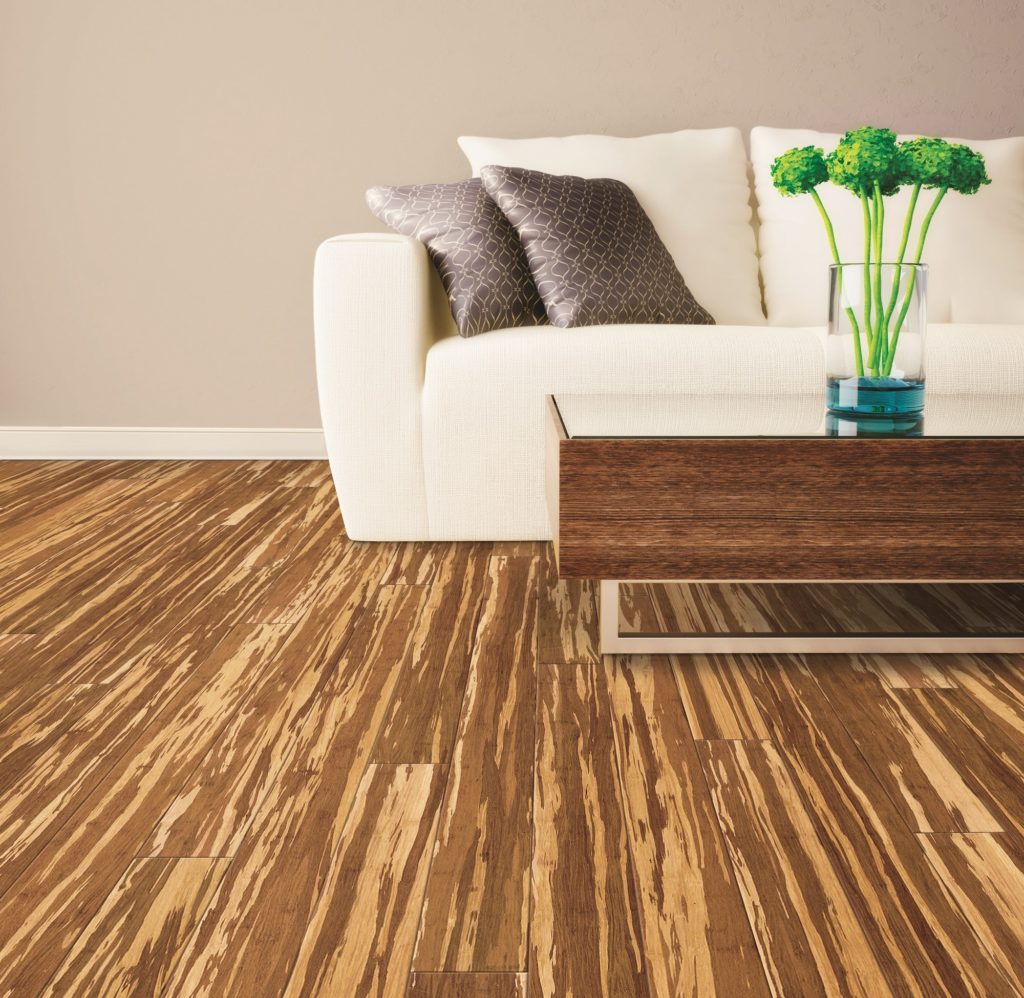
Refinishing bamboo flooring costs range depending on a number of factors. If you hire someone, it will often cost around $3 per square foot. If you do it yourself, you can expect to spend $1–$2 per square foot depending on tool rentals and which products you select.
But really, those are just ballpark estimates—the real costs will vary on location, room size, and about a thousand other things.
However: when you compare the cost to install engineered hardwood floors to the cost to refinish bamboo flooring, it’s clear that refinishing is the cheaper option.
Cleaning and Maintenance Tips for Bamboo Floors
Keeping your floors clear of dust and dirt is imperative to avoid scratches. By sweeping and clearing with a damp mop once a week, you will help to protect your bamboo floors and make them last.
The other key to keeping your bamboo floors in good shape is cleaning up spills as quickly as possible. Remember, some types of floor tiles can deal with sitting moisture, but bamboo and other woods can’t. The only exception to this rule is teak, but there are tons of other teak flooring pros and cons to worry about.
At the end of the day, maintaining bamboo flooring is no different than maintaining any other hardwood floor alternatives like cork or hemp flooring. But it’s always good to check the fine print on whatever product you choose!
For example, if you’ve read up on the disadvantages of cork flooring, you’ll know that you have to seal it every few years. Bamboo just needs to be kept clean and dry and it will last. Don’t worry about how to refinish bamboo flooring as much as how to keep from needing to refinish bamboo flooring.
And How Long Do Bamboo Floors Last?
Most manufacturers offer lifetime structural warranties—which is a great bonus. Bamboo finishes can last up to 25 years before needing to be redone if they are well cared for.
So: Ready to Buy or Refinish Some Bamboo Flooring?
Still on the fence about refinishing your bamboo flooring or purchasing new floors? Maybe you read some incredible Pergo reviews or saw the latest RevWood products and want to consider those? Or perhaps you don’t feel up to the challenge or refinishing your flooring just yet?
Whatever the case, don’t worry! You have tons of options. Bamboo is a beautiful, strong, eco-friendly flooring choice—but it’s not your only choice. The best flooring for your home is the one that ticks all of your boxes.
Our advice? Find a flooring store near you to get some expert advice. Local flooring retailers know everything there is to know about floors. And they can answer questions and make recommendations based on your specific needs, whether you’re looking for the most popular carpet brands or advice on the best flooring for kitchens. They’re the ones to talk to.
And if you want some more information on different types of flooring, check out:
- A Guide to Peel-and-Stick Carpet Tiles (& 9 Reasons They’re Amazing)
- Carpet vs. Laminate: The Real Pros & Cons
- Is the Cork Flooring Lowes Sells Actually Worth Buying?
- How Much Does it Cost to Replace Carpet with Hardwood?
- Carpet or Hardwood in Bedrooms: Which is Better?
- The Ultimate Guide to Low-VOC Carpet
- Snap-Together Tile Flooring: Is it Right for you?
- Tile vs Laminate Floorings: The Pros and Cons
About The Author

Steph Gregerson
November 20, 2020
Steph is a book nerd, rule follower, and pizza lover who can't get enough of playing outside. She was raised on the ice rinks of MN and currently resides in sunny San Diego. As a freelance writer, she loves research, producing content, and organizing information for a wide variety of clients. She currently has at least 10 browser windows open at all times.
